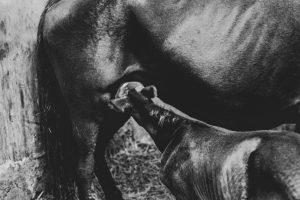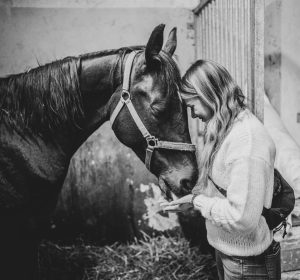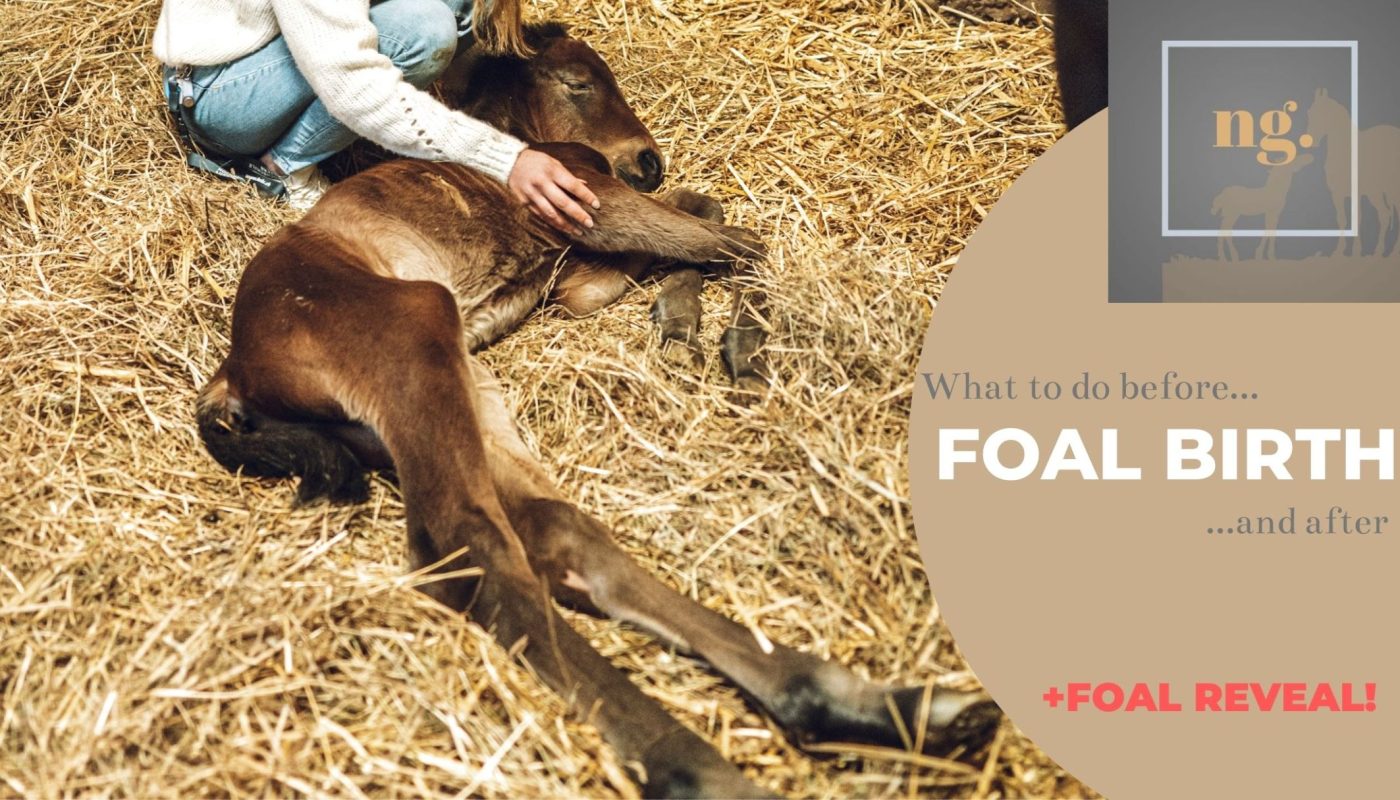Welcome back for the next article!
There is so much to watch out for during the last days before the birth and in the first 24 hours after the birth. I hope you will appreciate this exhausting summary of the most important actions and observations every breeder must watch out, for in order to proceed successfully with a new life delivery.
I am not a veterinarian, therefore previous research and long discussions with several breeders preceded this article to provide relevant information.
The moment you have been waiting for these 11 months is finally here. I am sure you or your responsible person had all the important stuff prepared. You could have read, what it should contain in the last article!> feel free to revise or read it now @foalkit
Is it coming?
Not every mare has the same symptoms when delivering a foal, especially talking about the maiden mares or firm sports mares, but usually the symptoms somehow cross with each other.
Belly shape
In the last two weeks to a few days before the delivery, belly shape usually changes. From having a nice round shape going more to the sides it changes to a “v-shape”, where the belly is more elongated down in the hind part of it. This is caused by the foal changing its position suitable for delivery. It might not be that visible in some mares, however, being really close to the due date without any belly changes can signalize a foal not turning/a bad position of the foal. There, especially in the case of a maiden mare, I would recommend checking through sonographic examination by your veterinarian.
Hind muscles
A few days before the foaling, you can see the hind muscles, and muscles around the tail relax. The tail bone is more visible, signaling the birth is around the corner.
Udder changes
Udder goes (or should go) through several changes before the delivery. It might be hard to observe with mares having more movement, best to be observed in the morning and evening. Firstly, you can see it get bigger and fills up with fluid. Secondly, watery drops occur followed by so-called vaxxing- yellowish udder closures. The last change, which not every mare gets to is the milk dropping. Some mares start to drop the milk only after the birth, some start a few days before the birth.
Side note: Don’t squeeze the udder to find out the state! Mare might already have a colostrum ready inside and you certainly don’t want your foal to miss out on a drop!
“Colicky-like behavior”
The first labor stage may be accompanied by a colicky-like behavior- constant nervosity, turning on a place, laying down and getting up, sweating, and first contractions. The best is to leave your mare at the calmness of her stable and monitor the rest throughout the cam later. How to proceed or what does it look like during the labor itself? Better to be said by an equine veterinarian. Therefore I found you a nicely descriptive article published by Vet University of Pennsylvania for you. >https://bit.ly/foal-birth There you can read about the labor stages a bit more in detail.
First hours AFTER
Feeding the mare
It is recommended to serve mash or some other highly nutritious easily digestible feed. My stable owners/breeders put a bit of sweetener in form of dextrose into a bran mash, these “fast sugars” help the mare to be fresh sooner and provide the energy quickly.
Reactions
Both mare and foal should be bright and respond quickly. The mare should be non-aggressive, both should be curious, sniffing each other, and the mother should lick the foal.
Standing up
Even though being just born, foals should be immediately attempting to stand up with a successful result in a matter of 2 hours.
Nursing
Colostrum contains a very important mix of antibodies, which needs to be delivered within a few, let´s say 3 hours of the foal’s life. Savvy reflex should be started automatically, however, if you are about to lack the time soon and the foal still isn’t nursing, don’t wait and simply extract it with a wide injection and feed the foal from it. After the colostrum has been fed (appx half a liter, less could be insufficient), you gain some time and can focus on teaching the foal to drink. Old horsemen sometimes put a bit of honey on a mare’s udder to make it more intuitive for a foal to approach, don´t hesitate to assist manually. A sufficient supply of antibodies can be tested, non-adequate one can be solved by plasma transfusion as a last resort. At the latest at the end of the day, the foal should deliver meconium, otherwise, an enema might be needed.
Note: If the foal seems to be not responsive, disoriented or mare detached, talk with your veterinarian about the possibility of a neonatal maladjustment syndrome occurrence, usually solvable by a technique called “squeezing”. Up to 80% of dummy foals survive, but it is crucial to act as soon as possible.
Placenta control
In a few hours after the birth, the whole placenta should be extracted by the mare. If that is not the case or you aren´t sure if it is complete, a veterinarian needs to be called. Neglect could result in fatal infections.
Overall, when in doubt, contact your veterinarian. It is always a good idea to proceed with post-partum control to be on the safe side.
It´s a boy!
Finally, let me make this post a bit more personal and visual. Let me introduce you to our first breeding result, my current biggest pleasure and eternal source of happiness and cheekiness. A very bright, active, and cuddly colt born just after midnight on the 20th of April from Presta (Eibisch by Escudo I x Ronald by Burgraaf) by Tallmann TN (Toulon by Heartbreaker x Colman by Carthago). Photos taken during the first day of life, my first meeting with him. //photo by @vendycanon
More to be continued..












If you have missed any of previous articles..:
1.You want that foal halter, don’t you? Part 1
2.You want that foal halter, don’t you? Part 2
3.Foal Kit + Instagram!Also don´t forget to contact me via Instagram account @equi_note or via the comment section with your feedbacks 🙂



